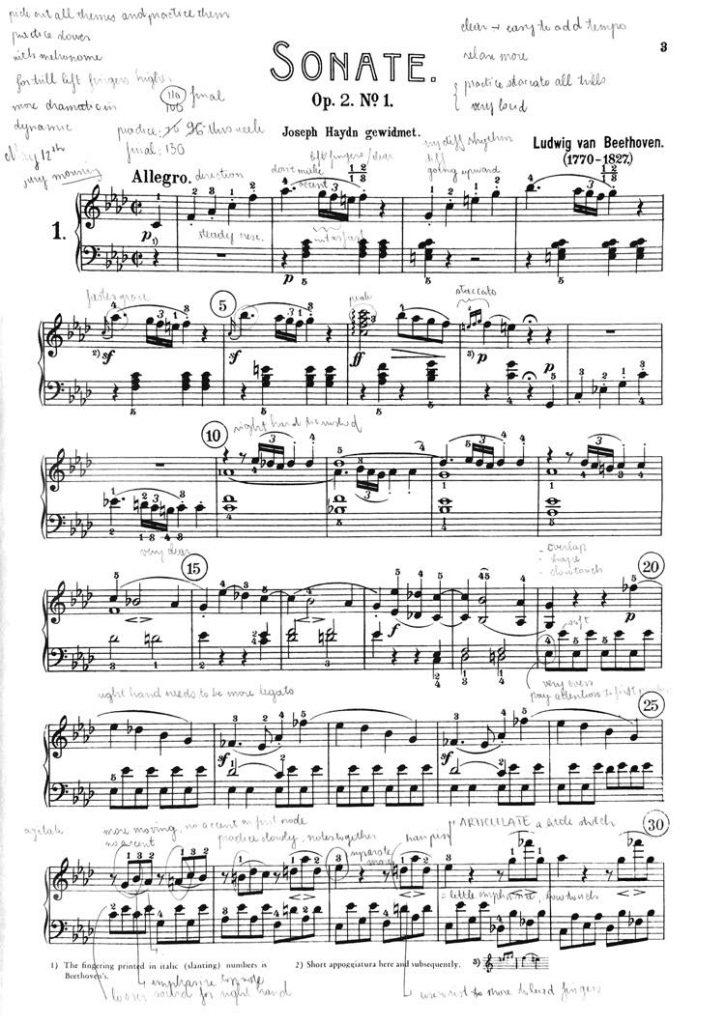The Beethoven Sonata I Learned this Semester
It’s been a while since I blog, so I wanted to talk a little bit about classical music here. This semester I learned Beethoven Sonata Op. 2 No. 1 (also known as Beethoven Sonata No. 1) in F Minor, Movement I. This marks my first time learning Beethoven after a long while (my last Beethoven piece was the Sonata No. 5, Movement I). I’ve been playing a lot of pieces of other styles (lots of Romantic, Mozart, Bach), so it’s refreshing to play a Beethoven.
I think it’ll be fun to share a little bit of my learning process, so here’s a snapshot of my annotated sheet music of this Sonata. I try to write down everything Yunzhi said, so it’s sometimes so funny because the annotations are all over the places. For example, at the tempo, I wrote Practice: 70 at some point, then crossed it out the week after when we increased the tempo to 96, then 100, and then 110 for the final tempo.
The challenges for me when learning this piece are:
1. Triplets (the trill-like triplet signature of this piece). Trills are always so difficult for me T.T, and I’ve gotten much better, but still. In the end, I changed the fingerings for the trills and also practice it very loudly with staccato (as suggested by Yunzhi). And also I realized that keeping my wrist low and relax my fingers is the way to go. I think I get too nervous with trills, so that’s why I’m always very tense playing it.
2. Making the piece sounds “dramatic.” Drama and intensity is a common characteristic found in many Beethoven pieces, and certainly in many of his Piano Sonatas (e.g. the famous Appasionata, Tempest, Pathetique, Moonlight, etc.).
3. Practicing with a metronome. I had to practice controlling my pulse for the piece well before increasing the tempo and add some rubato / accelerando.
I’ll be making a recording of me playing some time this weekend / next week (so I might post it later if it’s good enough LOL). But for now, please enjoy this rendition here by pianist Lewis. The timestamp for the first movement is 14:55-19:20. I especially like this interpretation because it is slower than other interpretations, but very lyrical and personal.
